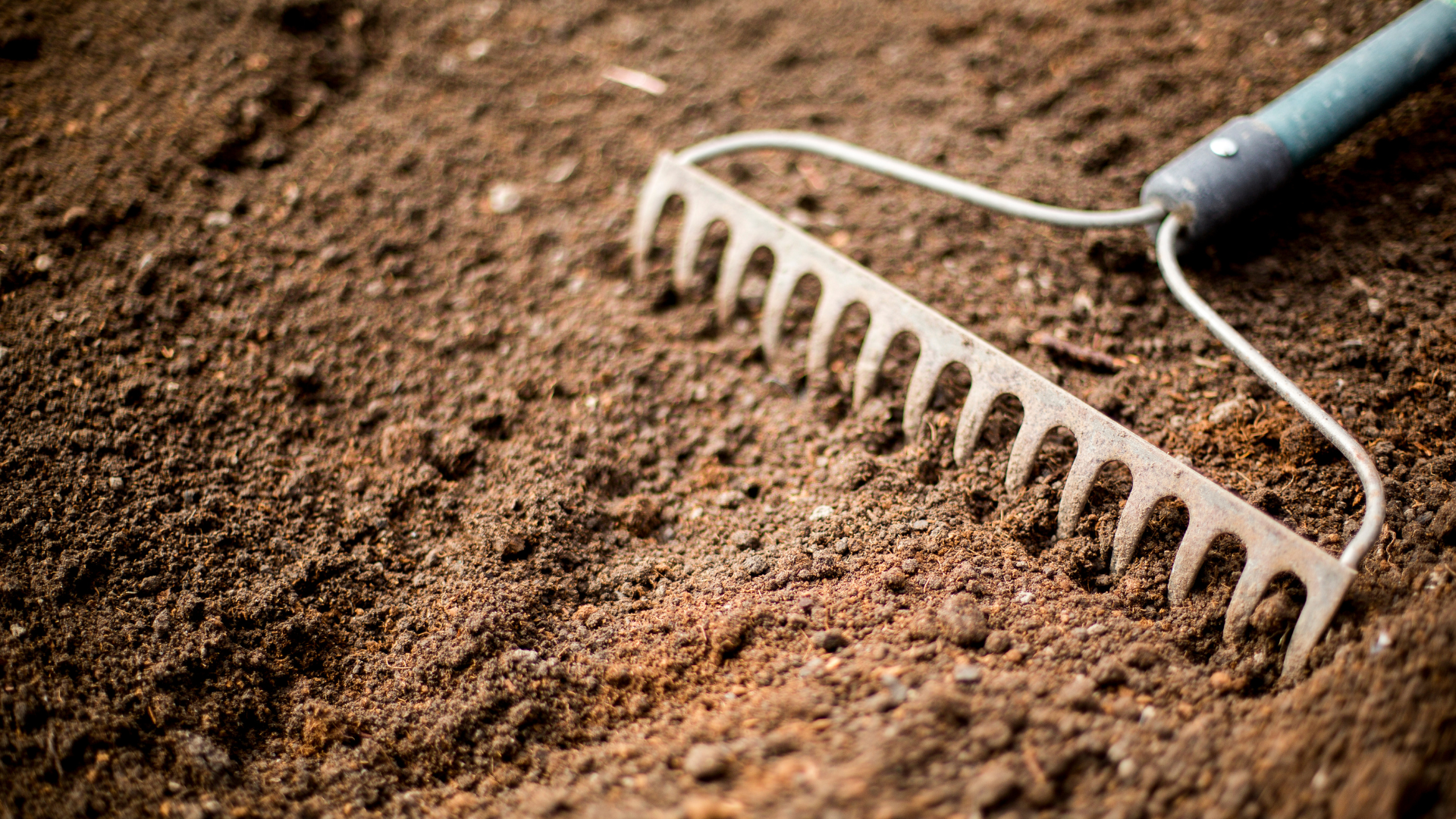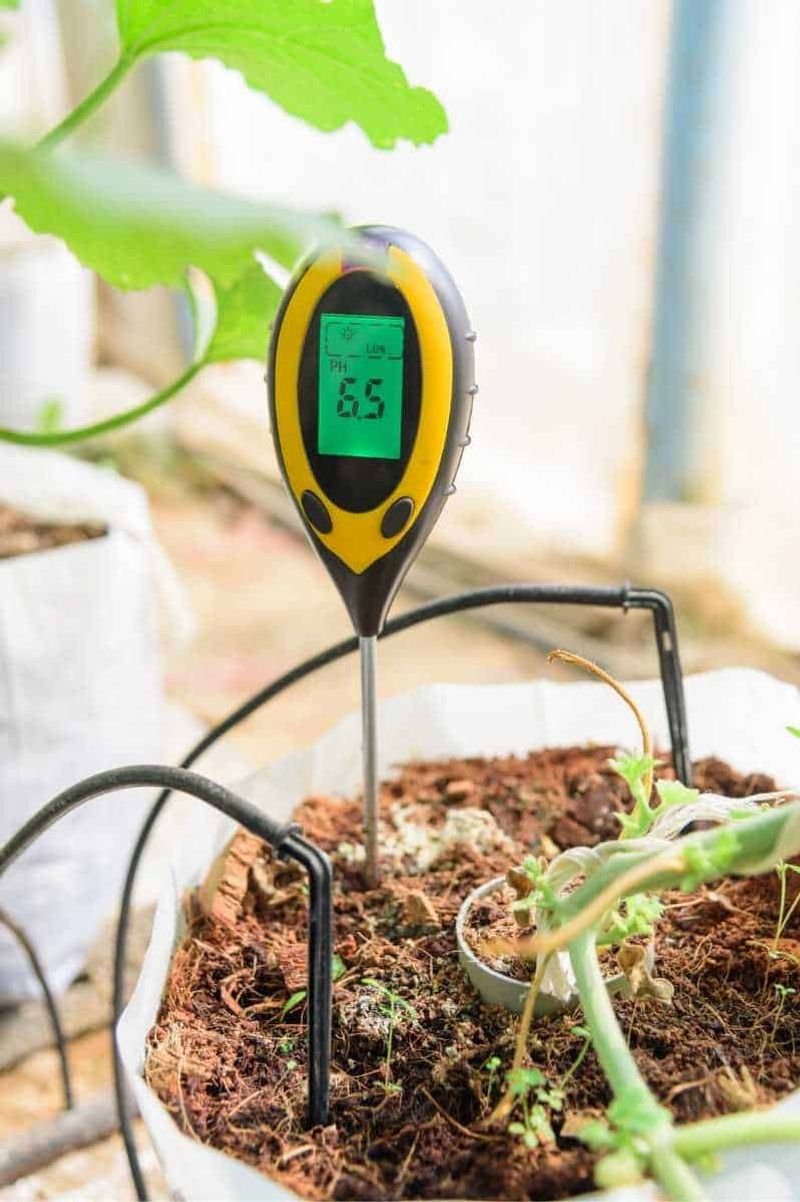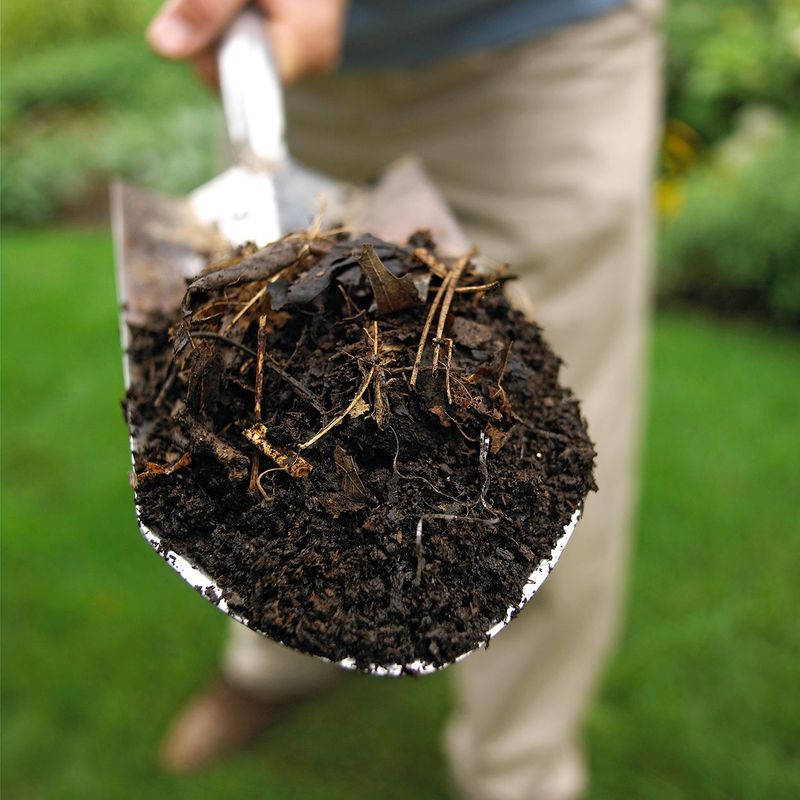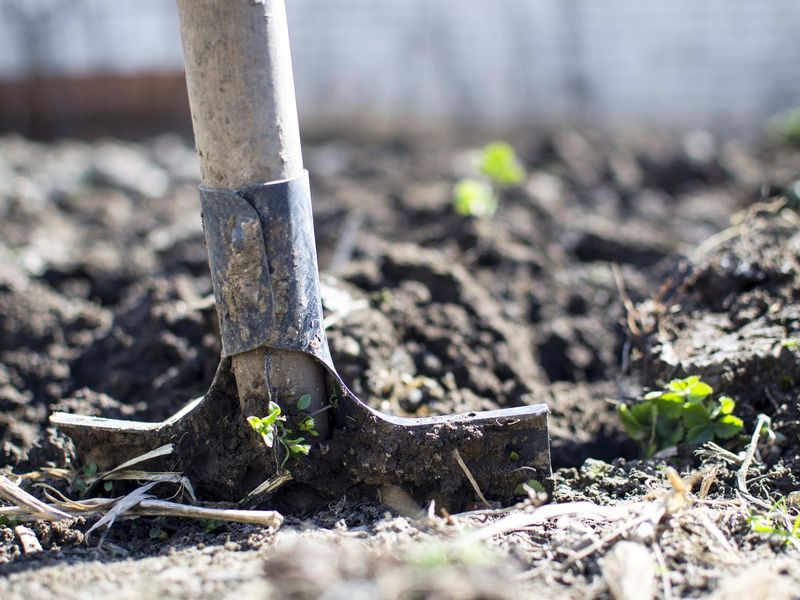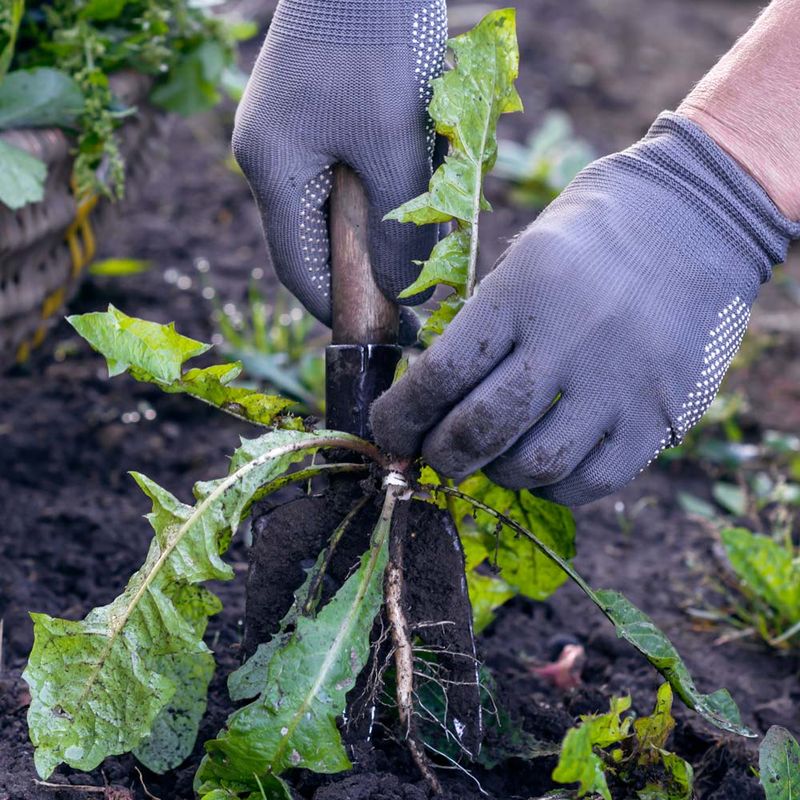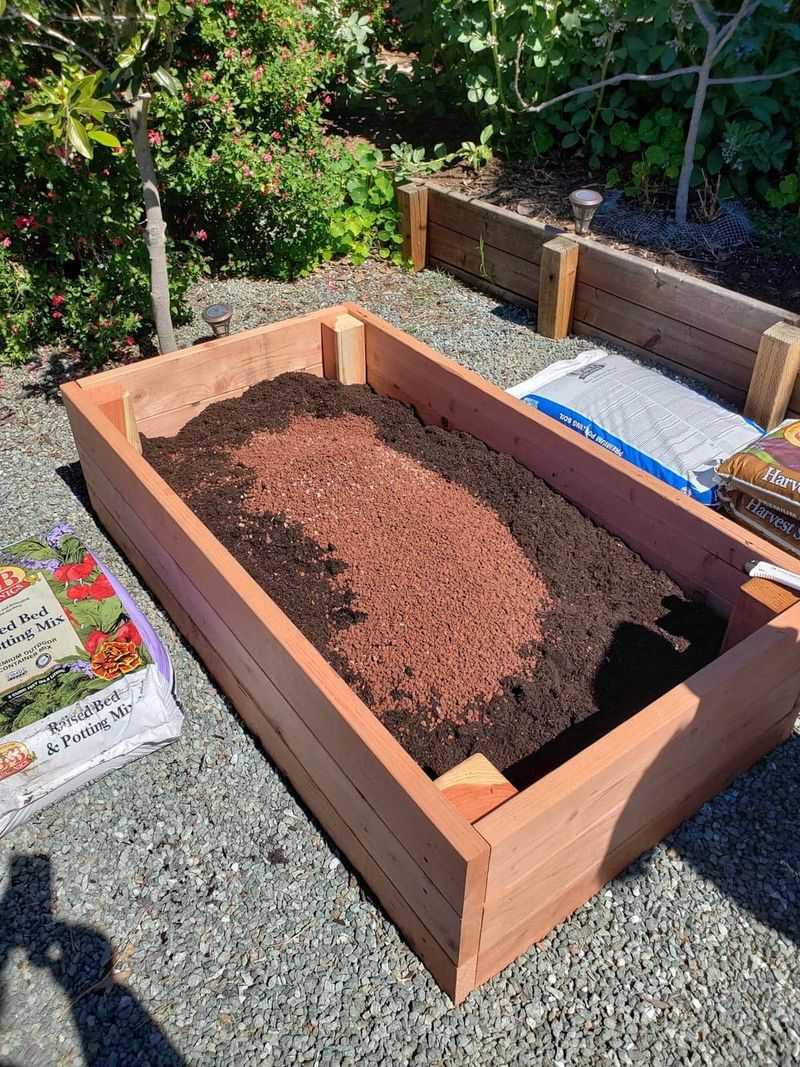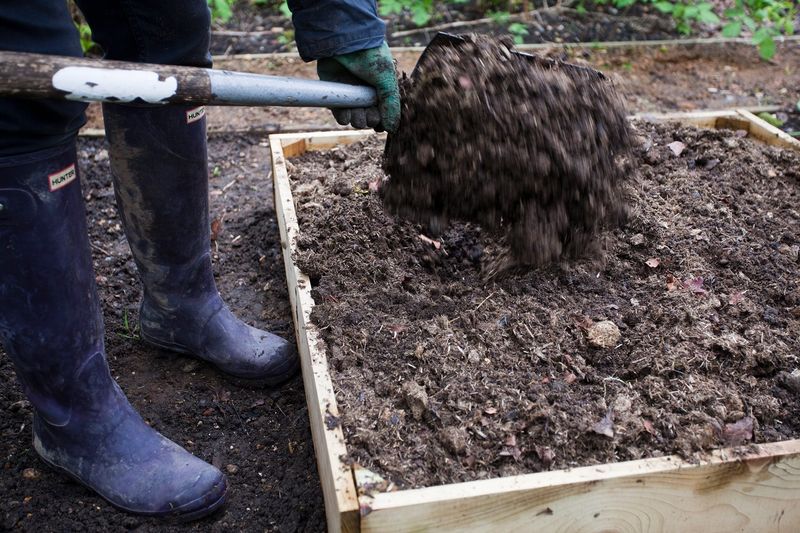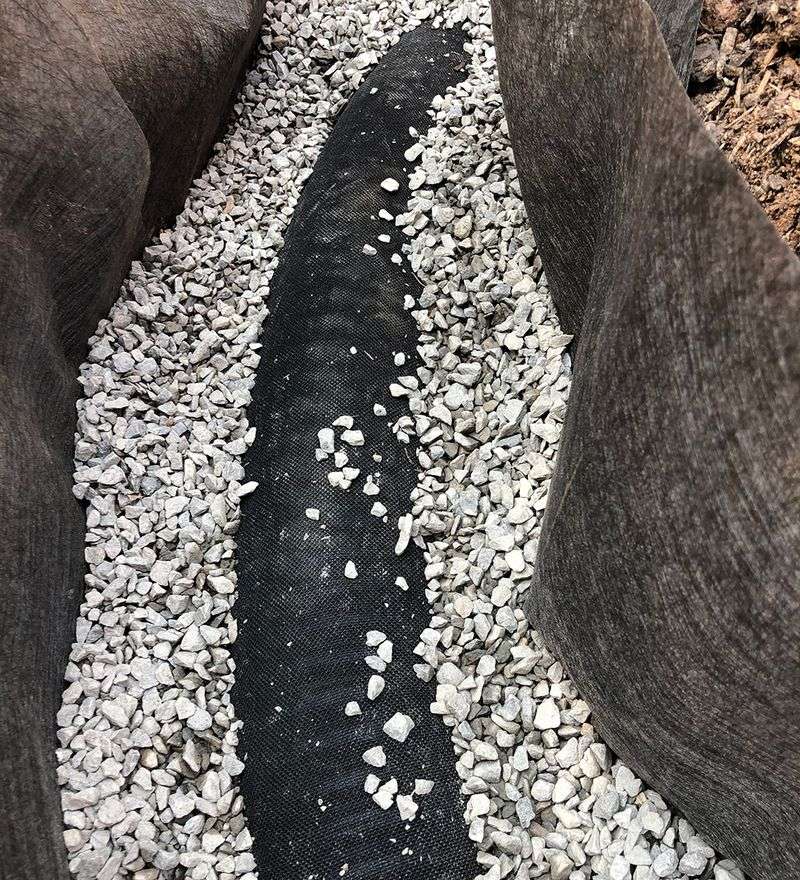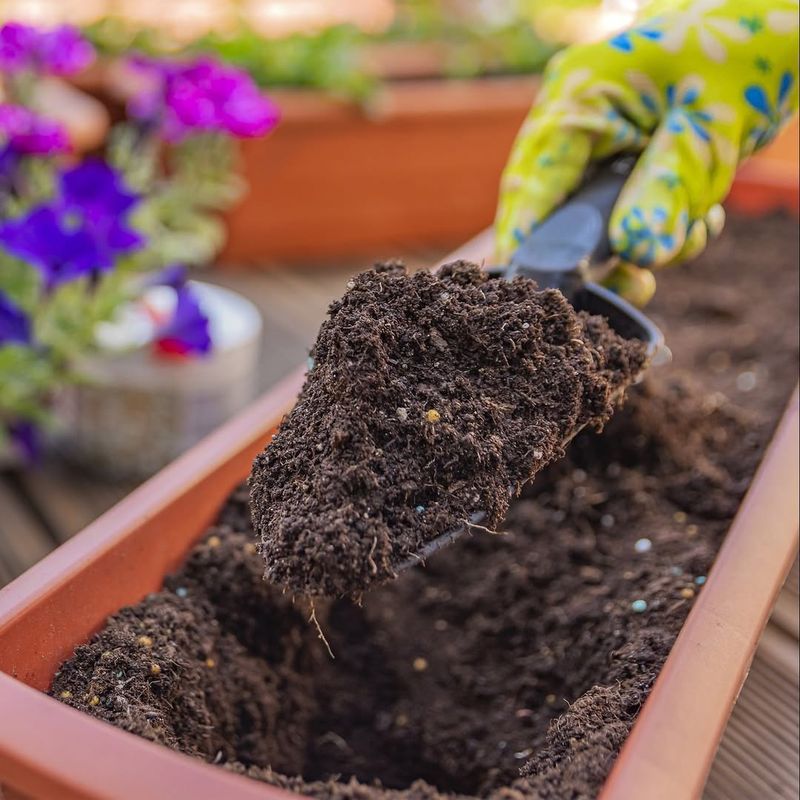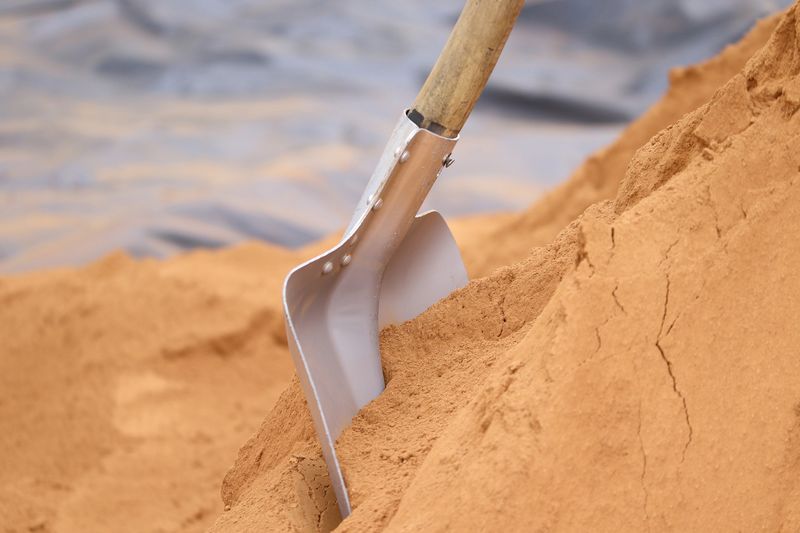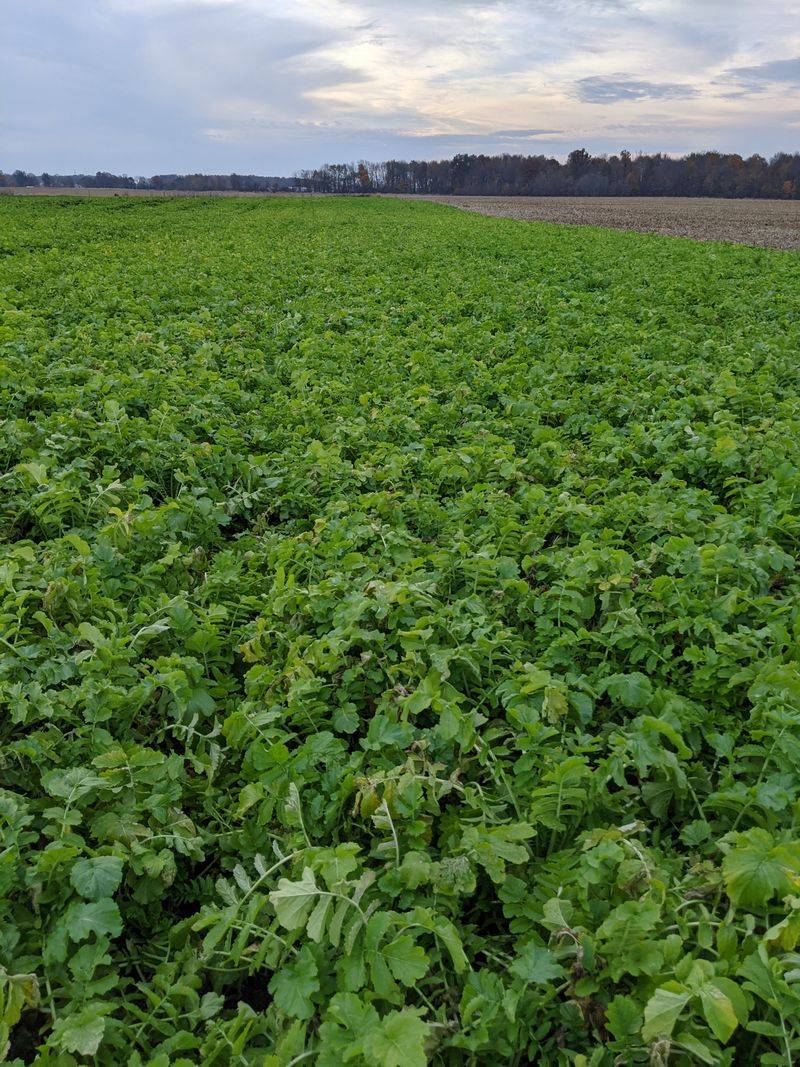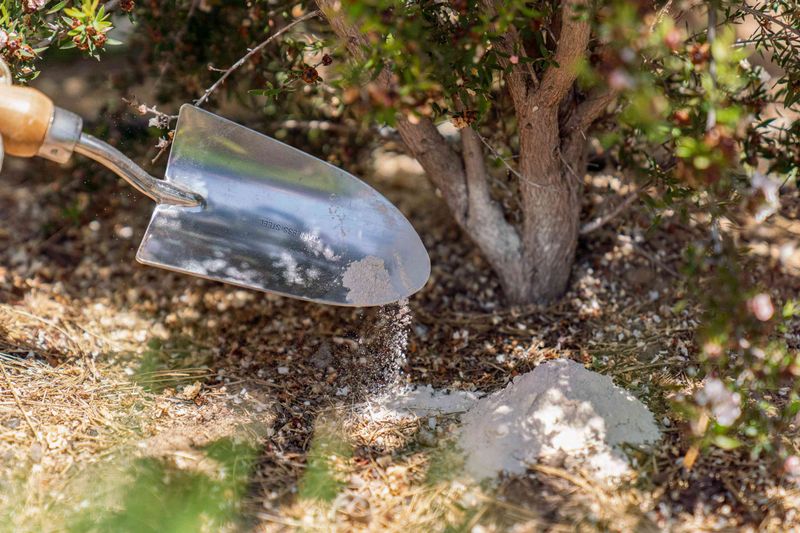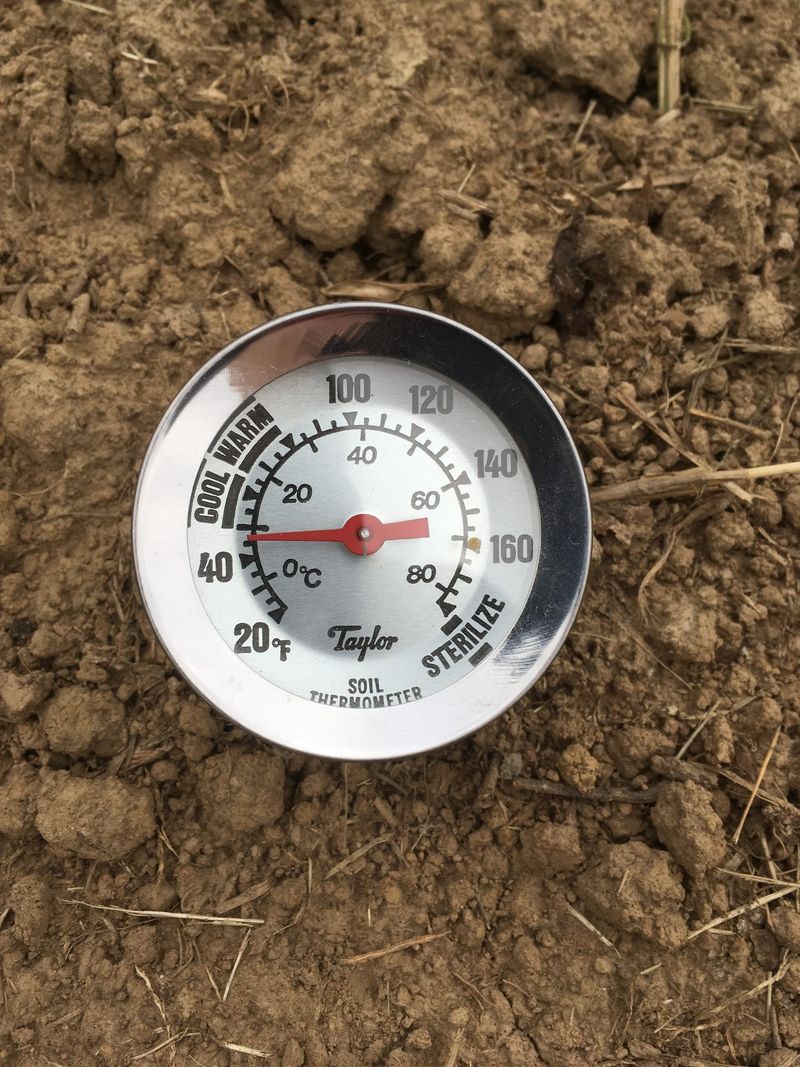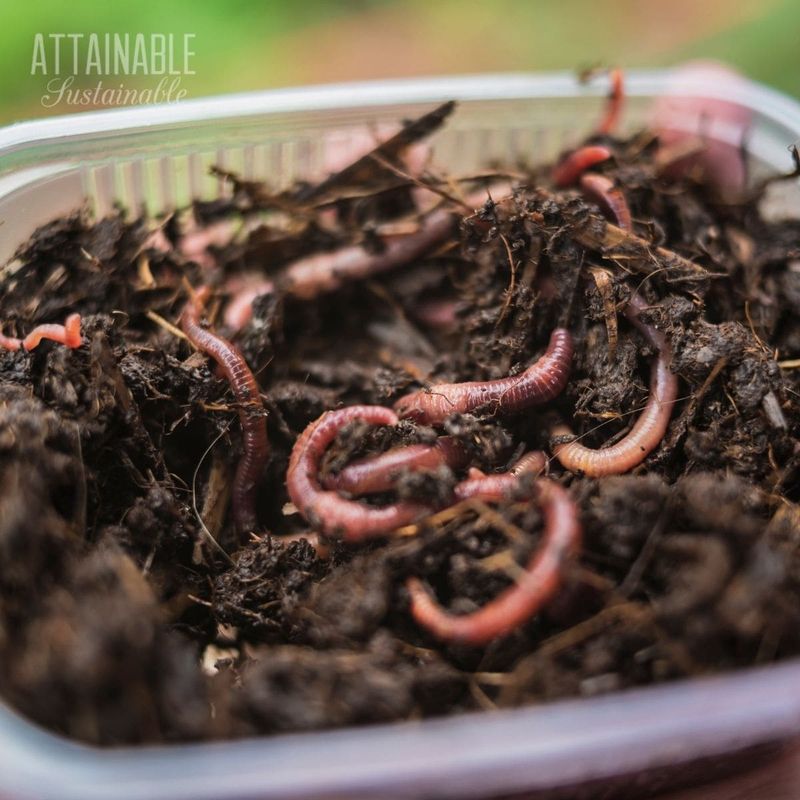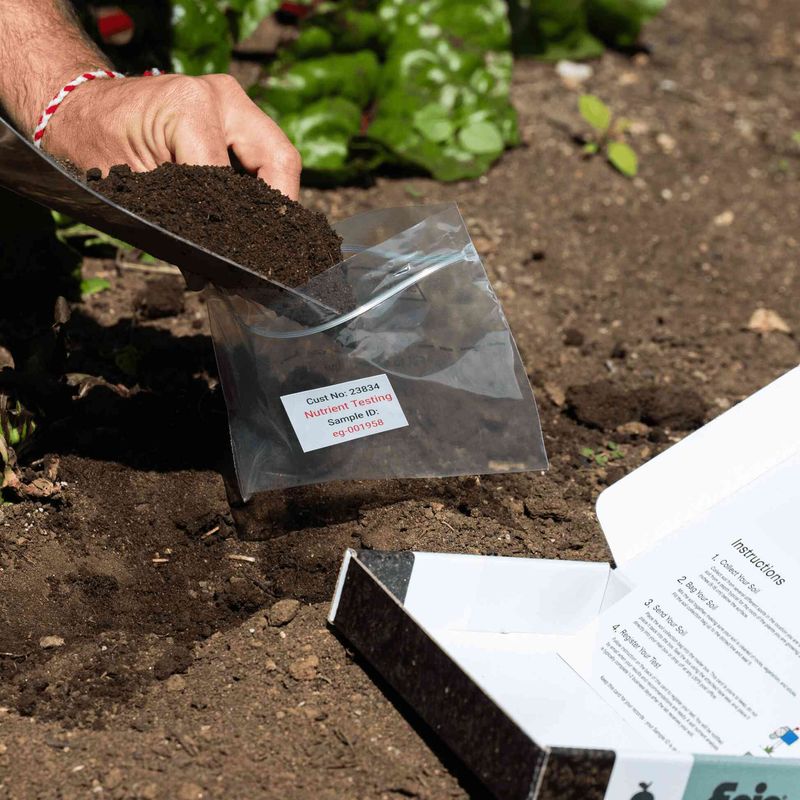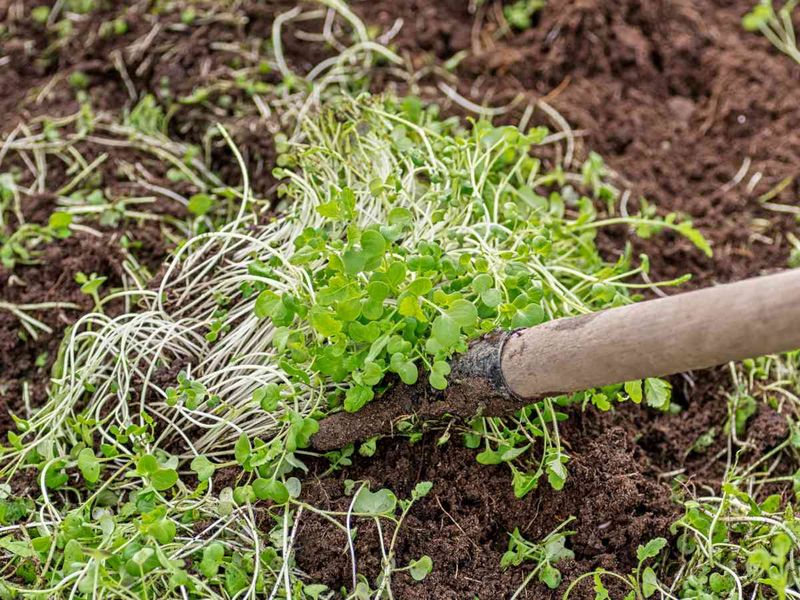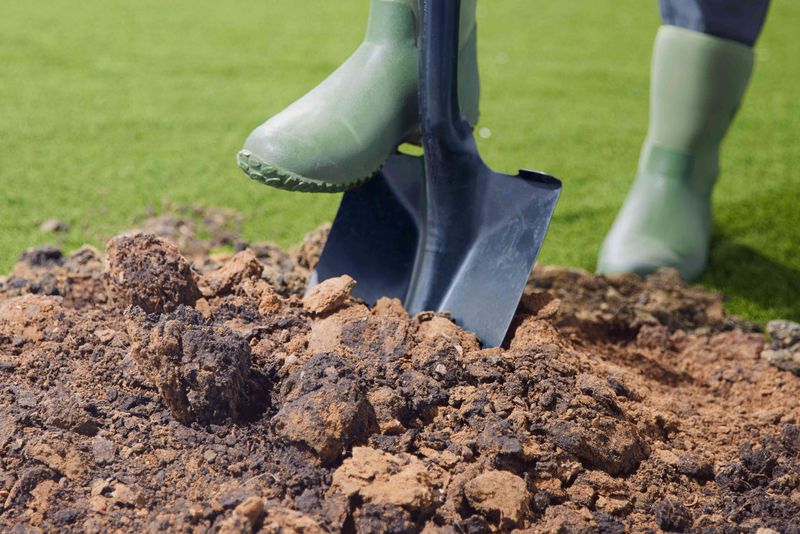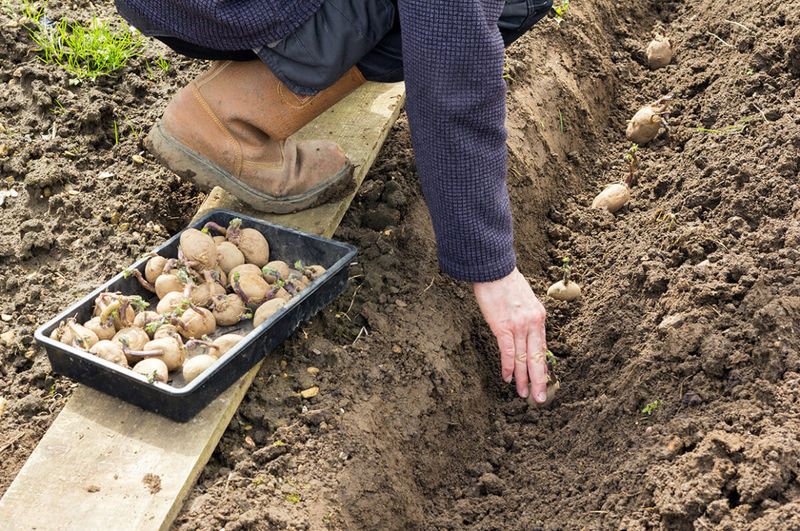Preparing your soil is like setting the stage for a blockbuster play. Get it right, and your garden will steal the show! Trust me, I’ve learned this the hard way.
One season, I skipped testing the soil pH and ended up with a garden that looked more meh than wow.
From checking pH levels to mixing in some well-rotted manure, these steps are like the secret sauce to a flourishing garden. Your spring garden will thank you, and I promise, it’ll be worth it!
1. Test soil pH
Have you ever wondered if your soil is too acidic or too alkaline? Using a pH meter or test kit is the way to go! The soil’s pH level affects nutrient availability to plants.
Testing is straightforward, and it provides insight into whether your soil needs lime or sulfur. If your soil’s pH is off, plants might struggle, even if you’re doing everything else right.
Correcting the pH can lead to astonishing plant growth. So, grab that pH meter and start testing! You’ll be one step closer to gardening greatness.
2. Add organic compost
Adding organic compost to soil is like giving it a fancy spa treatment. Compost enriches the soil with nutrients and improves its structure.
By doing this, you’re setting your garden up for a successful season. Compost is not just any ordinary soil additive; it’s a magic mix that supports healthy root growth.
Plus, it’s environmentally friendly. Whether you make it at home or buy it, compost is a must-have for any gardener looking to boost soil quality and plant health.
3. Till the soil
Breaking up compacted soil can feel like a triumph! Tilling is an old-school method that loosens the soil, allowing air and water to circulate better.
This process can make a world of difference for plant roots. However, over-tilling can harm the soil structure, so it’s wise to do it sparingly. It’s about striking a balance.
A well-tilled garden bed provides a fresh start for your spring planting. So dust off that tiller and give it a whirl to prepare your garden for planting.
4. Remove weeds
Weeds are like gatecrashers at a party; they show up uninvited and steal the spotlight. Removing them is crucial to preparing your garden soil.
They compete with your plants for nutrients and water. Regular weeding keeps your garden looking tidy and ensures that your plants have the resources they need to grow.
Whether you pull them by hand or use a tool, getting rid of weeds is a simple yet effective way to boost your garden’s potential. Say goodbye to those pesky intruders!
5. Add mulch
Mulching is like giving your garden a cozy blanket. It helps retain moisture, suppress weeds, and regulate soil temperature, making it a triple threat against garden woes.
Mulch comes in various forms, from wood chips to straw, and adds a neat appearance to your garden. It’s an easy and classy way to enhance your soil’s condition.
Plus, as it breaks down, it adds nutrients back into the soil. So, don’t skimp on the mulch; your garden will thank you for it.
6. Aerate the soil
Aerating the soil is all about giving it some breathing room. By poking holes in compacted soil, you allow air, water, and nutrients to reach plant roots more effectively.
This simple act can lead to astonishing improvements in plant health. Aeration tools are available at most garden centers, and the process can be a satisfying workout.
Whether you own a large plot or a small patch, aerating can do wonders. It’s like opening a window for your soil to breathe and thrive.
7. Use raised beds
Raised beds are like penthouse suites for your plants. They offer improved soil drainage and control over soil quality.
Building a raised bed can be a fun weekend project. In raised beds, you can tailor the soil to your plants’ needs, making it perfect for areas with poor soil.
Plus, they reduce strain on your back by raising the garden to a more manageable height. With raised beds, your gardening game will be elevated, both literally and figuratively.
8. Incorporate well-rotted manure
When it comes to organic matter, well-rotted manure is top-notch. It provides essential nutrients for plants and improves soil structure.
Just be sure it’s well-rotted, or you might end up with more weeds! Adding manure to your soil can be a game-changer. It’s like adding a natural fertilizer that’s been used for centuries.
Whether you’re gardening for veggies or flowers, incorporating manure will yield remarkable results. Your soil and plants will thrive with this natural boost.
9. Improve drainage
Good drainage is the secret to preventing waterlogged roots. If water pools on your soil, it’s time to take action. Improving drainage allows excess water to escape, keeping plants healthy.
Methods include digging trenches or adding gravel. Each garden is unique, so solutions may vary. But a well-drained garden is a happy garden.
With proper drainage, your plants can grow without the risk of drowning, and that’s a relief for any gardener.
10. Add peat moss
Peat moss is like a lightweight champion for your soil. It improves moisture retention and texture, especially in sandy or clay soils.
Adding it to your garden can lead to significant improvements in growth. However, use it sparingly as it can impact the environment. When used wisely, peat moss can enhance soil quality without causing harm.
It’s an excellent addition for those looking to give their garden a classy touch. Your plants will love the newfound moisture balance.
11. Add sand for texture
If your soil feels like modeling clay, sand can be your best friend. Adding sand improves texture, allowing water to drain more efficiently.
This can be especially beneficial for clay-heavy soils. A proper blend leads to a soil that is easy to work with and appealing to plants.
Just don’t overdo it, or you might end up with too much drainage. Finding the right balance can lead to a garden that’s both beautiful and functional, much to the delight of any gardener.
12. Apply organic fertilizers
Think of organic fertilizers as gourmet meals for your garden. They’re packed with nutrients and support sustainable gardening. Using them provides plants with the nourishment they need.
Unlike synthetic options, organic fertilizers improve soil structure over time. Applying them is an investment in the long-term health of your garden.
With options ranging from fish emulsion to seaweed extract, there’s something for every type of garden. It’s like a culinary delight for your plants.
13. Incorporate cover crops
Cover crops are the unsung heroes of soil improvement. They protect and enrich the soil during the off-season, preventing erosion and adding nutrients back.
Planting cover crops like clover or rye can lead to healthier soil come springtime. They essentially act as green manure, adding organic matter to the soil.
It’s like giving your garden a rest while still enriching it. When tilled back into the soil, they provide a feast for future crops.
14. Mix in bone meal
Bone meal is like a secret weapon for gardeners. It’s rich in phosphorus, which supports strong root development and flowering.
Adding bone meal is a straightforward way to boost soil nutrition. A sprinkle here and there can make a big difference in plant health.
Whether you’re growing veggies or flowers, bone meal can help. Just be cautious of pets, as they might find it enticing. With this addition, your garden will have the foundation for successful growth.
15. Use a soil thermometer
Ever wondered if your soil is too chilly for planting? A soil thermometer provides the answer. It’s a nifty tool to determine the right time for planting.
Knowing the soil temperature can prevent planting too early, saving seeds from a cold shock. It’s a small gadget but a big help.
With a soil thermometer, you can confidently plan your planting schedule. It’s like having a weather forecast specifically for your garden soil.
16. Add worm castings
Worm castings are like black gold for your garden. They’re packed with nutrients and improve soil structure, making them a sought-after addition.
Adding worm castings can lead to healthier plants and soil. They’re a natural way to enhance nutrient availability.
Whether you buy them or have your own worm bin, these castings are a gardener’s delight. With this in your arsenal, your garden will be the talk of the town.
17. Check soil nutrient levels
How do you know if your soil is up to par? Testing the nutrient levels can provide insights. It’s like having a health check-up for your garden.
Knowing what’s in your soil helps tailor fertilizer applications. Nutrient imbalances can be corrected before they affect plant growth.
A test kit is a smart investment for any garden enthusiast. With regular checks, you’ll ensure your plants have everything they need to flourish.
18. Use green manure
Green manure is a rock star in the world of soil enrichment. Planting it in the offseason and tilling it back enriches the soil naturally.
It adds organic matter and nutrients, enhancing soil fertility. Different plants can be used, like legumes, to suit specific needs.
Using green manure is an eco-friendly way to prepare for the next planting season. It’s a strategy that pays dividends in soil health.
19. Improve soil structure
A well-structured soil is like a well-built house; it supports everything above it. Improving soil structure involves adding organic matter to balance the texture.
This can lead to improved root growth and plant health. Whether your soil is too sandy or too clay-like, the right amendments can make it just right.
With better structure, your garden becomes a more inviting place for plants to settle and grow.
20. Rotate crops
Crop rotation is like playing musical chairs with plants. It prevents soil depletion and disrupts pest cycles, promoting a healthier garden.
By changing the location of specific crops each season, you can maintain soil fertility. It’s an age-old practice that still holds value today.
This way your garden stays balanced and productive. It’s a strategic move every gardener should consider.

